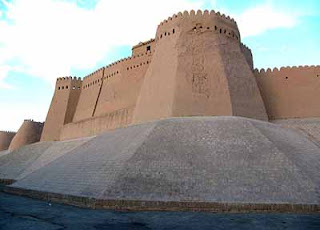The Autumn Equinox Lady
You are all probably busy making your plans for the celebration of the Autumn Equinox, which occurs here in Mongolia on Thursday, the 23rd, at 11:09 AM. Here on the 23rd the sun comes up at 6:40 in the morning and sets at 6:49, making a day of twelve hours and nine minutes. Lately I have going each morning to the summit of Zaisan Tolgoi, near my hovel, to observe the sunrise and will undoubtedly be there on Thursday morning. I usually leave my hovel at 5:30, while most of you sluggards are still on bed, and arrive at the summit at about 6:00. Oddly enough, I am not alone at this hour. Three other people, two Mongolian men and a Mongolian woman, all looking to be in their sixties, also come to the summit each morning. The woman circumambulates the summit several times, stopping at each of the cardinal points to make prostrations. The men appear to be engaged in various and sundry meditations.
The summit of Zaisan Tolgoi
Although I intend to celebrate the Autumn Equinox I will not be engaging in any heedless bacchanals, unlike some people I could name, but will instead engage in Orisons more in tune with the sobering times in which we live. As I always do on these occasions, I am once again imploring people not to engage in any animal or Human Sacrifices. If you live in New York City I want to emphasis that Union Square is not a suitable venue for sacrifices of any kind, animal or human (if you are in Union Square, however, you might want to wander by the Strand Bookstore).
This year’s Autumn Equinox is especially auspicious because it occurs on the same day as the Harvest Moon. If you are still celebrating the Equinox on the evening of the 23th, as I suspect you will be, I suggest that before you stumble into your drinking dens for a night of senseless dissipation you glance up into the sky and watch the totally inspiring sight of the Harvest Moon sliding between Jupiter and the Great Square of Pegasus .




























